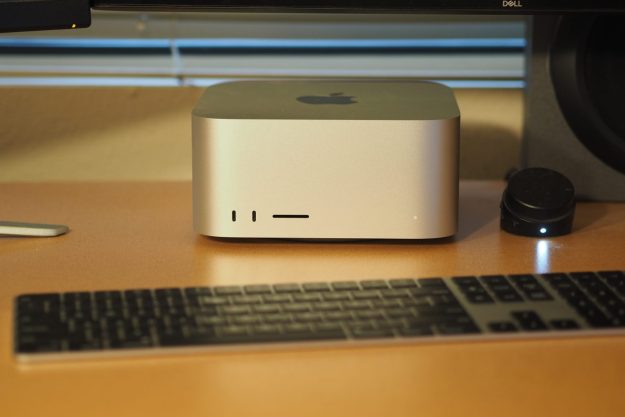Apple’s impressive new Mac Studio was clearly not meant to be opened up, repaired, or upgraded, but a curious YouTuber found a way inside the mini PC.
A look inside the Mac Studio revealed that there might be room for upgrades, but it seems that Apple took extra steps to prevent that. It also showed just how much bigger Apple’s proprietary silicon is in comparison to other similar chips.
Max Tech shows off the Mac Studio in a nearly 20-minute-long video, unboxing it and then disassembling it to give his viewers a look inside the device. Apple’s new Mac Studio doesn’t have any visible screws, strongly discouraging users from attempting to repair the computer themselves. This also prevents any potential future upgrades.
Of course, there is no telling what kind of repairs and upgrades will be offered by Apple itself, but for the time being, it looks like Apple is making a change with the Mac Studio. Previous Intel-based Mac minis allowed for user repairs and maintenance. This time, any interference is made much more difficult, if only due to the fact that Apple hid away the entrance into the mini PC very well.
Max Tech disassembled the M1 Ultra model of the Mac Studio, priced at $4,000. Although there are no visible access points, Max Tech found that peeling off the silicone ring at the bottom of the device reveals multiple layers of screws, and finally, a direct peek at the hardware, including the logic board with the M1 Ultra chip. The chip is hidden away beneath a heat pipe and an additional cooler.
The M1 Ultra is a system on a chip (SoC), meaning that it contains the CPU, GPU, and RAM all in a single chip, and it’s proving to be staggeringly powerful. Add to that the fact that it’s made out of two M1 Max chips fused with Apple’s UltraFusion technology, and it shouldn’t surprise anyone to find out that the chip is larger than normal. However, calling the M1 Ultra enormous is not an overstatement. Max Tech compared it to the AMD Ryzen 3 3300X, and the difference in size is huge (see belw). We never get to take a closer look at the chip itself, though, because Max Tech leaves it intact and doesn’t remove the lid that covers it.

Perhaps a more interesting finding is that the Mac Studio actually has room for upgrades despite the fact that Apple clearly stated it is not user accessible. The computer can be configured with up to 8TB of storage, and that is what Apple suggests that users should do as opposed to relying on future storage additions. However, Max’s findings confirm that the space is there for crafty users who do decide to open up their Mac Studio.
The Mac Studio was found to have two M.2-style connectors that could be used for Apple’s SSD storage. This implies that it would be possible to add more storage in the future, or simply swap out existing storage in the case of a breakdown. Unfortunately, Apple doesn’t sell replacement drives, so there’s no way to actually get a matching SSD for the Mac Studio right now.
Another YouTuber, Luke Miani, took those findings a step further and actually tried to test the upgradeability of the Mac Studio. He wiped the SSD of a Mac Studio and then removed it from that device to try to use it in a different Mac Studio, utilizing one of the empty slots. Unfortunately, the Mac Studio would not boot with the transplanted SSD.
The mini PC was able to recognize the newly installed storage, but it would still not boot. This implies that Apple, apart from making the Mac Studio difficult to access, went a step further and disabled upgrades through a software block. As such, regardless of whether replacement SSDs for the Mac Studio will ever make it to market, upgrades are highly unlikely.
Even though Max Tech shows clearly how to open up the Mac Studio, it’s best not to try this at home. There are probably reasons why Apple chose to make it inaccessible to users, and fiddling with it may cost you your warranty.
Editors' Recommendations
- Why Samsung’s answer to the MacBook Pro can’t quite compete
- The new iPad Pro would be perfect, if only it were a Mac
- Why Apple’s M3 Ultra could be an absolute monster
- Why you should buy a MacBook Pro instead of a MacBook Air
- Why gaming on the M3 MacBook Air has left me impressed



